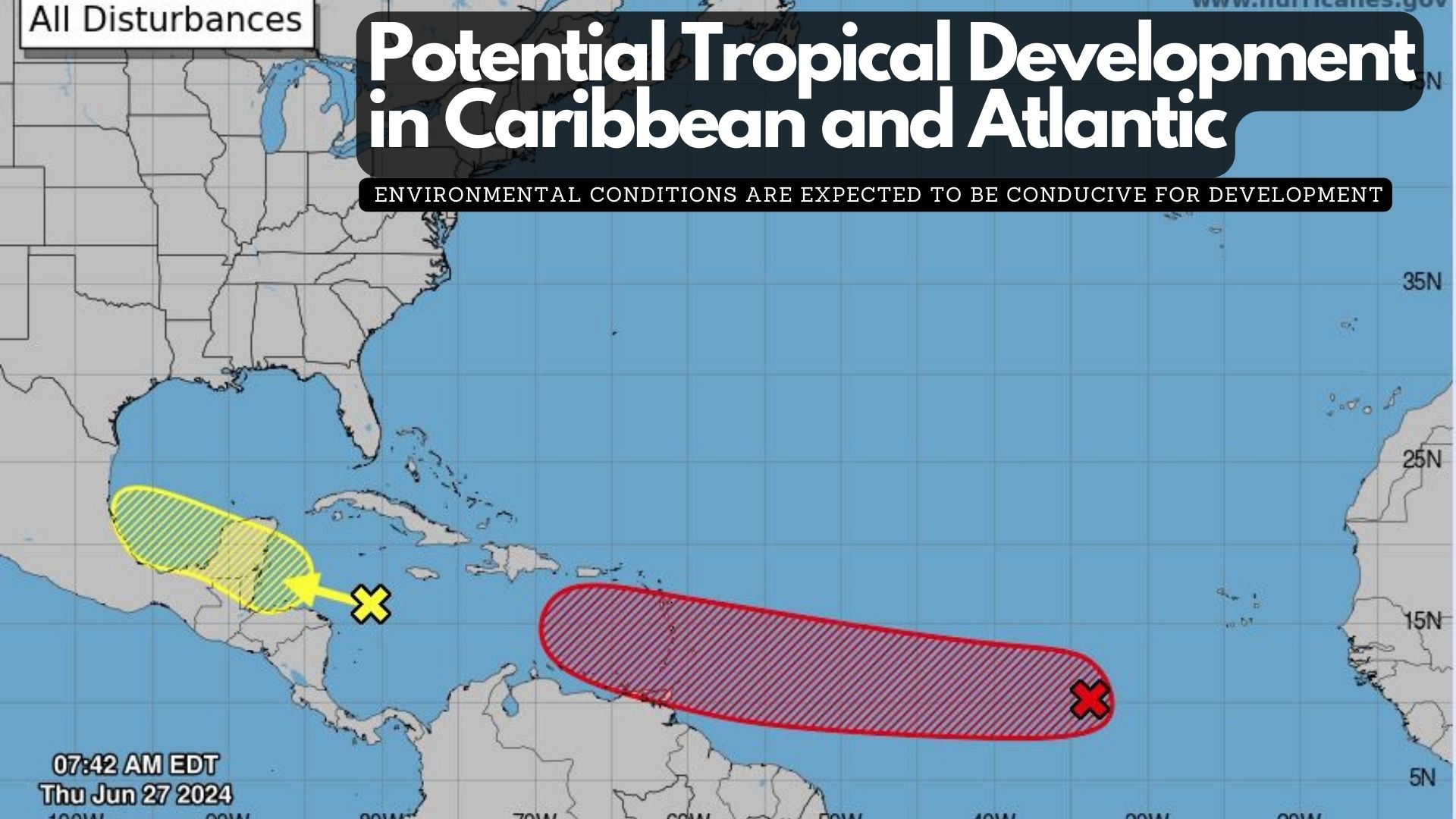This Thursday, a tropical wave in the western Caribbean Sea is creating widespread but disorganized showers and thunderstorms as it moves westward at about 20 mph. Some development of this system is possible over the northwestern Caribbean Sea or the southwestern Gulf of Mexico in the coming days. It has a low chance (10%) of formation in the next 48 hours and a low chance (30%) in the next 7 days.
Meanwhile, a tropical wave several hundred miles west-southwest of the Cabo Verde Islands continues to produce disorganized showers and thunderstorms. Environmental conditions are expected to be conducive for development, and a tropical depression or tropical storm is likely to form this weekend several hundred miles east of the Windward Islands as the system moves westward at 15 to 20 mph. It has a medium chance (40%) of formation in the next 48 hours and a high chance (70%) in the next 7 days.
